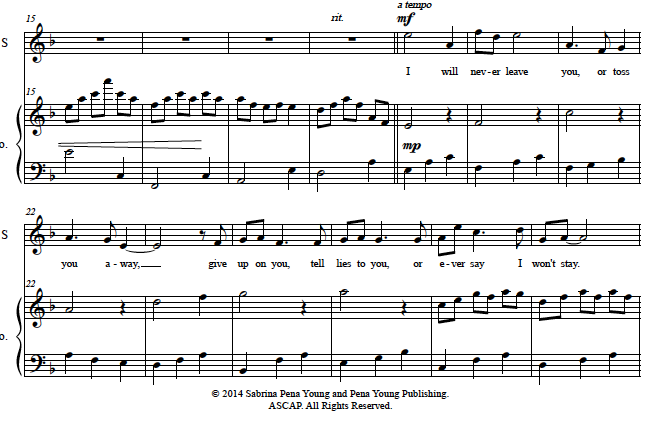Developing good rhythms for your vocal parts is a key aspect of songwriting. By learning how to write good vocal rhythm you will avoid pitfalls like trying to fit too many words in a single line and making lines which are almost impossible to enunciate.
Knowing what makes for good vocal rhythm will also help you keep your song singable by the performer and the audience. Whether you are writing fast-paced hip-hop, ambient dance music, a country ballad, or the next pop hit – good rhythm is the key to musical success!
There are a few ways to figure out rhythms for your melodic lines. For the exercises below, having a basic understanding of music theory will be helpful. If you would like to review basic rhythm theory, check out our rhythm ear training articles and Theta Music Trainer’s Rhythm Patterns page.
How to Write Vocal Rhythms
In this article you will learn three ways to create vocal rhythms when writing songs:
- Following natural speech patterns
- Imposing a lyric on a rhythm
- Hybrid version
1. Natural Speech Patterns
Read this line out loud:
“I will never leave you.”
If you figured out the natural speech pattern for this song, you might notate it this way:

In this example, the strict rhythms of speech are used to notate the line. You will notice that this might not actually be the most singable rhythm to use for this line. Still, knowing how to notate from a speech pattern will help you to then develop a strong melodic line that is natural for the singer.
In this example you will hear the same line sung in “Lonely Mother’s Cry” from Libertaria.
You will hear how the the rhythm was re-written to make it more musical. Certain words are stretched out. Read the lyrics below out loud first. Then listen to the actual audio example sung by Yvette Teel.

You might have difficulty transcribing rhythms by ear, or maybe all notation is difficult for you. If so, you can still learn to follow natural rhythms by clapping out the speech patterns as you work through these exercises.
While the ideal is to be able to write out the rhythms on paper, clapping along and using your ear training skills is also a good way to develop vocal rhythm patterns for your songs. Record yourself clapping along with the rhythmic patterns and play back these recordings to help you develop a good ear and work on your vocal rhythms.
2. Fitting a Lyric to a Rhythm
In this example you will impose a lyric onto an existing rhythm. This is very easy to do. For example, if you sing the song “Row, Row, Row Your Boat” you will hear that a simple triplet rhythm has been used. The lyrics have been imposed onto this rhythm.
If you were to say the words “Row, Row, Row Your Boat” the words would not follow the rhythm below. Nursery rhymes are great examples to start with since they are familiar and the rhymes are often simple, making for easy memorization.
Row, Row, Row Your Boat
Gently Down the Stream
Merrily, Merrily, Merrily, Merrily
Life is But a Dream
Exercise:
- Say the words to Row, Row, Row Your Boat
- Record your speech pattern
- Listen to the example and compare the natural speech with the sung speech
3. Hybrid Vocal Rhythms
Most songwriters will use a combination of strict natural vocal rhythms as well as fitting a lyric on top of a predetermined rhythm. This allows them the most freedom to both adhere to some natural speech rhythms but also create lines that are more singable and musically effective.
Michael Jackson’s Thriller is a good example of combining both natural rhythms with singable rhythms. In the verses he uses a combination of both while the chorus of Thriller clearly uses artistic freedom in stretching out words to fit the melody.
Learning how to master rhythm will help you develop good vocal writing skills. As you continue to practice these skills, you will find that writing good songs quickly will become easier. What are some challenges that you face as you write? Share your thoughts in the comments below!









